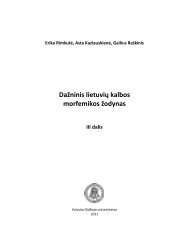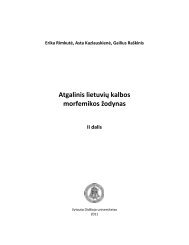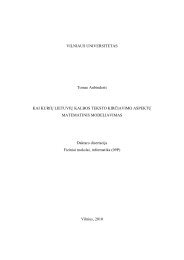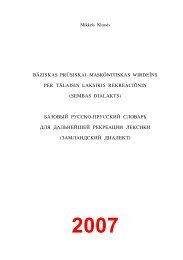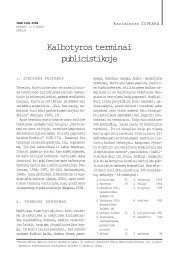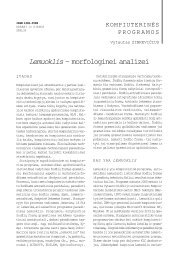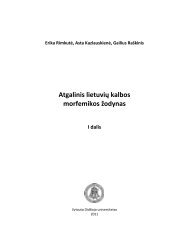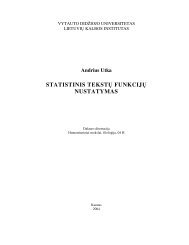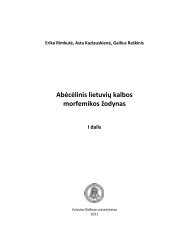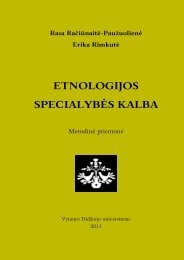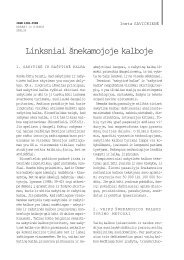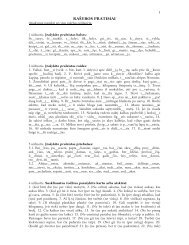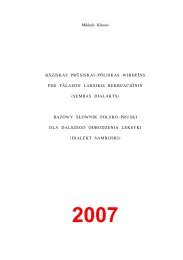HISTORICAL GRAMMAR OF OLD PRUSSIAN
HISTORICAL GRAMMAR OF OLD PRUSSIAN
HISTORICAL GRAMMAR OF OLD PRUSSIAN
You also want an ePaper? Increase the reach of your titles
YUMPU automatically turns print PDFs into web optimized ePapers that Google loves.
<strong>HISTORICAL</strong> <strong>GRAMMAR</strong> <strong>OF</strong> <strong>OLD</strong> <strong>PRUSSIAN</strong><br />
subst. – substantive<br />
subst.m. – mobile substantive<br />
suf. – suffix<br />
sup. – supine<br />
superl. – superlative<br />
top. – toponym<br />
tr. – transitive<br />
us. – usually<br />
v. – verb<br />
voc. – vocative<br />
WBaltic – West Baltic<br />
I – the 1st Prussian Catechism<br />
II – the 2nd Prussian Catechism<br />
III – the 3rd Prussian Catechism<br />
Translator’s notes<br />
One must know how to read and understand examples from Baltic and Slavic languages.<br />
The letters è, ð, þ mean ch, sh, zh (French j) correspondingly (Polish cz, sz, ÷z, ƒc, ƒs, ƒz correspondingly<br />
mean: ch, sh, zh, palatal c, palatal s, palatal z. Polish rz equals to ÷z).<br />
Lithuanian letters à, æ, á, ø (as well as Polish à, æ) are called nasals because they correspond<br />
to vowels with the nasal pronunciation as in French. These vowels come from the tautosyllabic<br />
units an, en, in, un, still preserved in Prussian in almost all positions, as well as in Lithuanian<br />
before the plosive consonants (and other consonants in some dialects). In Latvian these diphthongs<br />
first turned into uo, ie, î, û, afterwards producing short u, i, u in the final position.<br />
The nasal pronunciation has been lost in modern Lithuanian (except dialects) and substituted<br />
with the long pronunciation `, ç, î, û in the litarary language.<br />
Dash over a vowel means that this vowel is long. To mark a short vowel the sign ‹ is used<br />
sometimes.<br />
The letter ë means long narrow ç, but the letter y means long î in modern Lithuanian orthography.<br />
The letter o means diphthong uo in native words in modern Latvian orthography (usually<br />
ignored by the linguists who also ignore the sign of length when marking accent, e.g. …e, not „ç !).<br />
The linguists use the sign ’ after the consonant to mark the palatalized (soft) pronunciation<br />
of this consonant, cf. t’ < *tj .<br />
The sign “” means “turns into...”<br />
The sign * means that an item which follows is not attested but is a result of linguistic<br />
reconstruction. The sign o means that an item which follows does not exist (is impossible).<br />
For marking sorts of accent see further ftn. 2. – L.P.<br />
11



